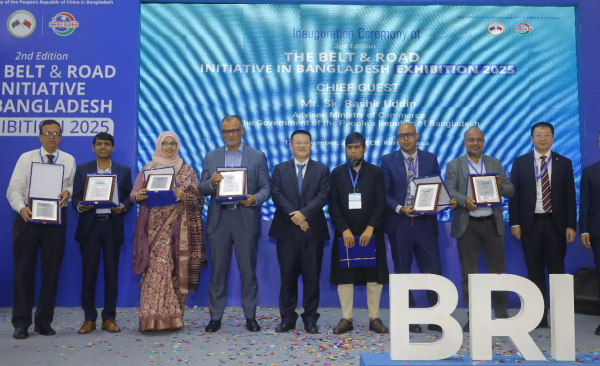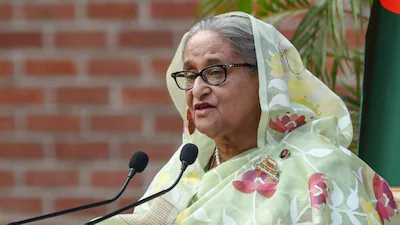AI BOOM FUELLING THE GLOBAL ENERGY RACE
- Update Time : Wednesday, February 5, 2025

—Sulochana Ramiah Mohan—
In an era where artificial intelligence (AI) has moved beyond science fiction to actively reshape global economies, the stakes have never been higher but with Elon Musk emerging as a prominent advocate for AI’s transformative potential in the United States, and innovations like ChatGPT from the US and DeepSeek from China making international headlines, the digital arms race is on!
Yet, behind every breakthrough lies a less-discussed truth: these sophisticated systems demand an enormous amount of energy. As AI-driven applications surge, so does their hunger for energy, challenging governments and businesses alike to secure sustainable energy sources.
AI’s heavy reliance on energy stems from several key factors. First, training AI systems—especially those using machine learning and deep learning—requires immense computational resources. This process involves processing vast amounts of data, which demands significant electrical power to run high-performance processors and graphics processing units (GPUs). AI operations are typically hosted in large data centres, where servers run continuously, requiring a steady power supply and additional energy for cooling systems to prevent overheating. Even after the training phase, AI models continue to consume energy during real-time applications, such as recommendation systems, autonomous vehicles and smart assistants.
Additionally, ongoing research and development, including experiments with new models, hyper-parameter tuning and simulations, also contribute to energy consumption during both the training and evaluation phases. These factors collectively explain why energy consumption is a crucial consideration in the development and deployment of AI.
Can South Asia, with its vast renewable resources and expanding infrastructure, position itself as a competitive hub for AI innovation, at least in the coming years?
As advanced AI drives soaring energy demands, the region has the potential to not only meet these needs but also leverage its renewable energy market to rival global players. With the world closely watching the intersection of AI’s disruptive potential and its energy challenges, South Asia needs preparedness too.
In this race, renewable energy has become a top priority, yet South Asia remains largely untapped despite its vast potential while the major powers driving AI innovation are now racing to expand data storage facilities, requiring a massive surge in energy—an investment of colossal scale. While oil drilling persists, even under US President Trump’s “Drill, baby, drill” stance, focusing on securing energy resources to support their industries and AI, South Asia’s transition to renewables is caught up with geopolitics making it difficult to get where it should be.
Sri Lanka and Bangladesh are aiming to increase their renewable energy usage but yet their progress has been slow. What is taking centre stage, however, is the rising energy race between India and China, particularly in the context of growing regional tensions.
India has focused on electricity exports, with projects like the Adani power plant in Jharkhand supplying power to Bangladesh via cross-border transmission lines. However, recent political tensions have cast uncertainty on the future of energy cooperation between India and Bangladesh.
In Sri Lanka, both China and India are competing for influence in the energy sector. Adani is pursuing its long-awaited renewable energy project in Mannar and Poonaryn, while China has secured a deal for an oil refinery in Hambantota, which raises questions given Sri Lanka’s emphasis on renewable energy. The refinery is intended mainly for exports, according to the government, but it could also lead to an influx of Chinese vessels carrying crude oil to Hambantota, strengthening China’s presence in the Indian Ocean. Adani has plans to establish a renewable energy supply chain through undersea cables between India and Sri Lanka, further intensifying the rivalry in the region’s energy landscape.
Although oil and fossil fuels continue to dominate, renewable energy—especially solar and wind—has emerged as a top priority worldwide. The South Asian region’s abundant sunlight, favourable wind conditions, and untapped natural resources make it a prime candidate for rapid renewable energy expansion. However, one of the critical gaps is large-scale energy storage facilities, which are essential for integrating renewables into the grid. Without substantial investment and policy shifts, South Asia risks falling behind in the AI-driven energy market, despite its abundant natural resources.
South Asia still faces hurdles in modernising its grid infrastructure, securing investments for energy storage technologies and overcoming regulatory and financing barriers. In many cases, superpowers and multinational investors are already moving aggressively into the market, seeking to establish control over key energy supply chains in smaller nations.
The ongoing competition, combined with continued reliance on traditional oil drilling, means governments and private stakeholders must act swiftly to establish robust, competitive markets for both renewable energy and storage solutions before implementing AI systems and fully harnessing their smart capabilities. However, we should also remember that the cost of AI applications is a significant barrier as institutions, particularly in the media sector, often lack the financial support to access or integrate AI tools relevant to their job functions.
Interestingly, South Asia currently leads the supply of IT applications to the US, making it a key player in the Western world. However, the region’s own IT infrastructure is not satisfactory. Recent assessments of government AI readiness show that Bangladesh and Sri Lanka rank in the lower half globally. For instance, the 2023-24 AI Preparedness Index places Bangladesh at 113th out of 174 countries with a score of 0.38, while Sri Lanka ranks 92nd with a score of 0.43. Bangladesh has been noted for its progress in telecommunications and data communication but still lacks a dedicated national AI strategy, which has contributed to its lower ranking. The trends portray that if South Asia can leverage its high resource potential while addressing these challenges through coordinated policy reforms, international partnerships and technological investments, it could not only meet the rising global energy demands driven by AI but also emerge as a significant, competitive player in the renewable energy market. In South Asia, two-thirds of energy is imported, with fossil fuels accounting for about 80% of energy production and AI’s growing energy needs can be effectively supported by renewable energy sources.
The computational power requires advanced AI systems and data centres continues to rise, there is an increasing shift toward renewable sources such as solar, wind, hydro, and geothermal power to meet these demands. Leading technology companies are investing heavily in renewable energy projects and energy storage solutions, not only to reduce their carbon footprint but also to ensure a sustainable, reliable power supply. Advances in grid management and battery storage are addressing the intermittency issues traditionally associated with renewables, ensuring that energy remains available 24/7 for AI operations.
China’s aggressive and sustained investment in research and development (R&D) has been instrumental in its rapid rise as a leader in cutting-edge AI like the DeepSeek. In contrast, India—despite its reputation as an IT powerhouse—has lagged behind, largely due to relatively low R&D spending.
Chinese companies and government initiatives have invested significantly more resources into AI research, establishing dedicated tech parks, funding national AI programmes, and fostering collaborations that accelerate innovation.
For example, breakthroughs like DeepSeek’s highly efficient, low-cost AI model stem from China’s robust R&D infrastructure and strategic funding, enabling Chinese startups to innovate with a fraction of the capital required by their Western counterparts, reported Reuters.
In comparison, India’s R&D investment stands at only about 0.64% of its GDP—far lower than China’s 2.41%—which has hindered the development of competitive, state-of-the-art AI technologies, despite impressive growth in AI publications, noted economictimes.com.
These trends and studies serve as eye-openers for other countries in South Asia, especially for Sri Lanka and Bangladesh. It is the need to prepare for the global AI race. The essential factor behind AI’s modest contribution in the region is to focus on investment in R&D.
_______________________________
The writer is an award-winning journalist and the Deputy Editor of Ceylon on Wednesday. She can be reached at [email protected]



















